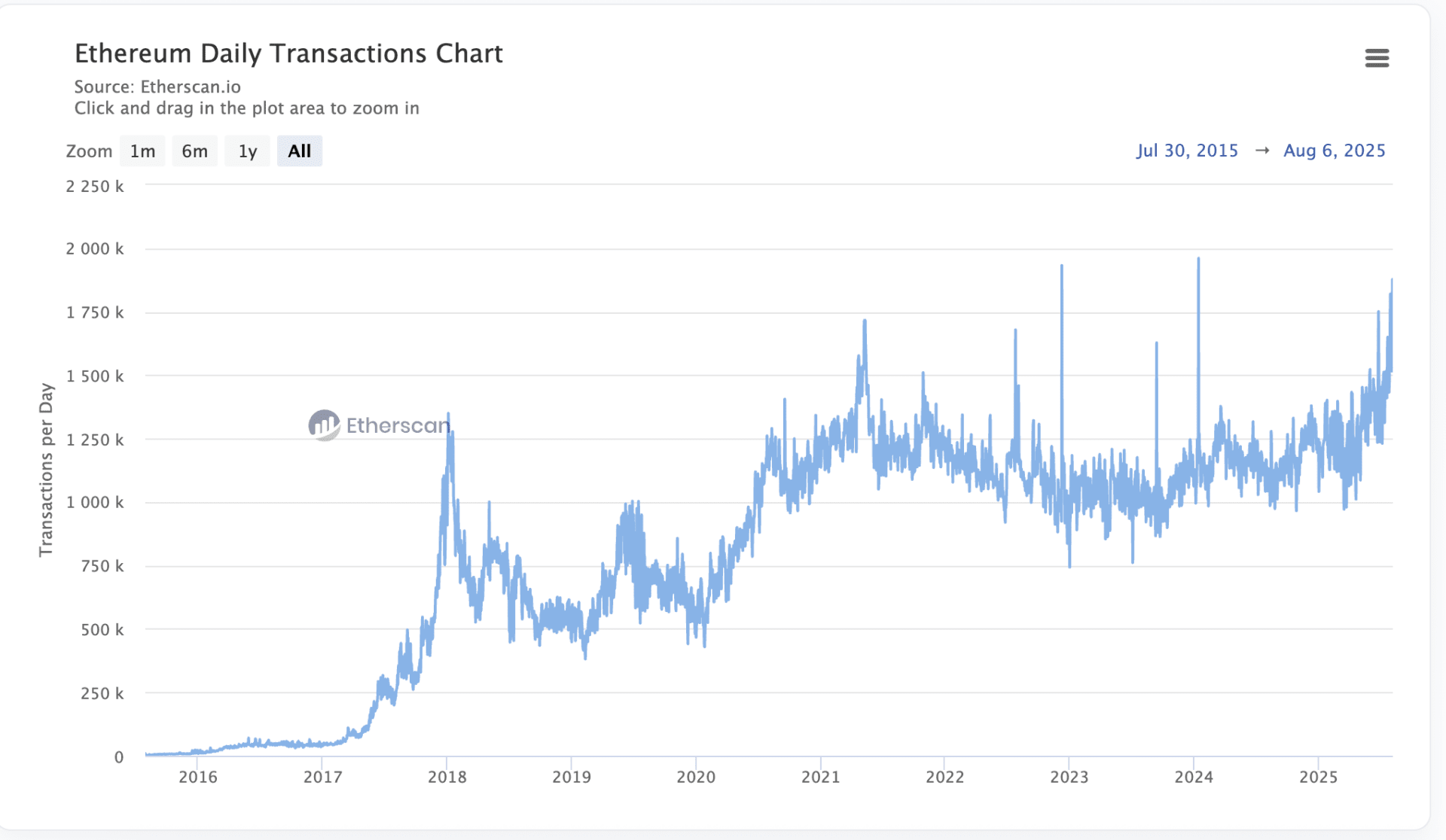The trading heat on the Ethereum chain has revived. According to data from the blockchain explorer Etherscan, the number of daily transactions on Ethereum soared to 1.87 million on August 5, approaching the historical high of 1.96 million set on January 14, 2024.

For Ethereum, which has been under pressure from up-and-coming projects like Solana and has seen a significant drop in user activity over the past year, the mainnet transaction volume has almost doubled compared to the beginning of the year, which can be seen as a clear signal of recovery in on-chain activity this year.
Although Solana's on-chain transaction count has exceeded 22 million today, achieving victory through volume, the trend of daily recovery in Ethereum's trading volume still attracts significant market attention. Nansen senior research analyst Jake Kennis stated that the recent increase in Ethereum's transaction count is primarily benefiting from the active trading of stablecoins USDT and USDC, as well as the decentralized exchange Uniswap.
He stated: 'For traders, observing changes in on-chain transaction data is one of the important indicators to understand overall market momentum, especially when combined with gas fees (transaction fees), protocol revenue, and other indicators, it can more accurately capture the pulse of on-chain activity.'
The surge in stablecoin trading volume is closely related to U.S. policy trends.
DappRadar senior researcher Sara Gherghelas pointed out that the recent increase in stablecoin trading volume may be closely related to the U.S. Congress passing and President Trump signing the (GENIUS Act) — this act provides a legal framework for stablecoin regulation and boosts market confidence.
She stated: 'The passage of stablecoin legislation, along with the approval of multiple cryptocurrency ETFs, is equivalent to traditional financial market liquidity flowing onto the chain, accelerating the increase in trading activities.'
Observing the market dynamics of the past month, analysts generally believe that the market performance of Ethereum ETFs has frequently outperformed Bitcoin ETFs, with a significant influx of funds.
Meme coins and the coin issuance craze are boosting the speculative atmosphere.
Sara Gherghelas added that there is still speculation from meme coins and a 'coin issuance craze' on-chain that is boosting trading volume. With the significantly lowered barriers for issuing coins on Layer 2 networks (such as Polygon, Base, etc.), a large number of new tokens have emerged, further enhancing the market's speculative atmosphere.
However, Solana remains the dominant player in the meme coin ecosystem. According to Dune Analytics data, Ethereum currently accounts for only about 10% of the overall meme coin trading volume, which still shows a gap.
This wave of trading has injected new momentum into the overall decentralized finance (DeFi) market. As of now, the total locked value (TVL) in the DeFi sector has risen to $137 billion, with Ethereum contributing about 59%, maintaining its core position.
Can this trend continue? Analysts warn: we must be cautious of overall economic risks.
Despite the renewed on-chain activity, Sara Gherghelas also cautioned that whether this upward trend is sustainable remains to be seen, especially as the world will face a series of significant macroeconomic events in early 2026, which may affect market liquidity and investment sentiment. She said:
However, one thing is certain: this wave of DeFi has brought more attention and trust to the field. If this trend continues, it is expected to bring positive benefits to subfields such as decentralized lending.

